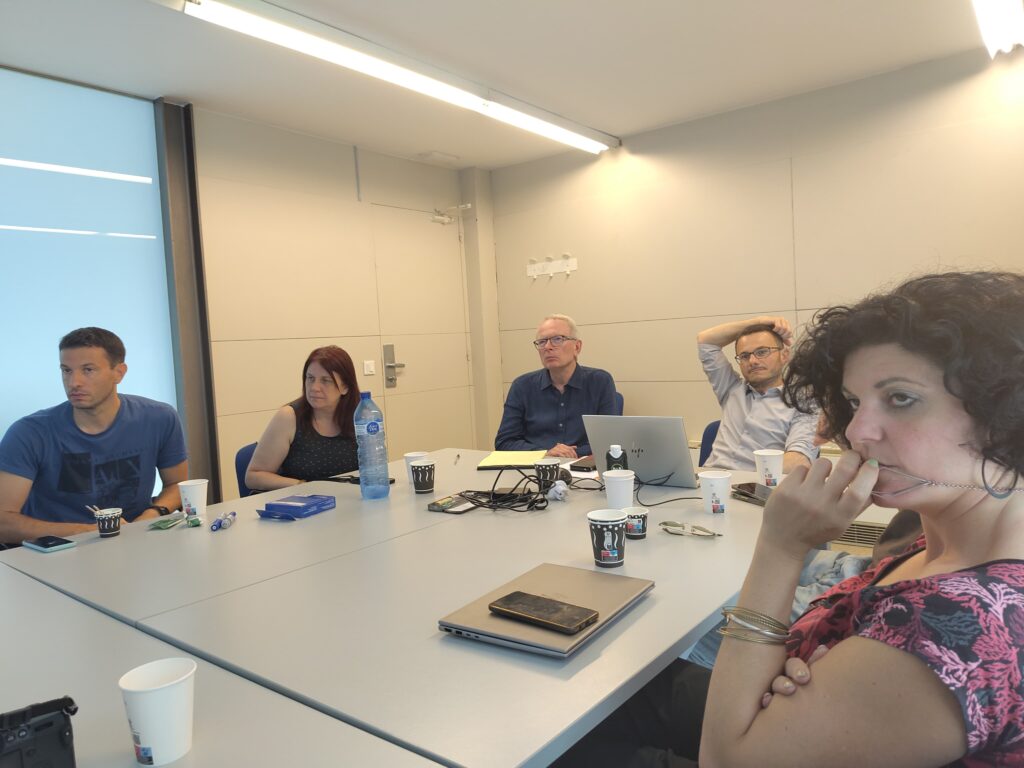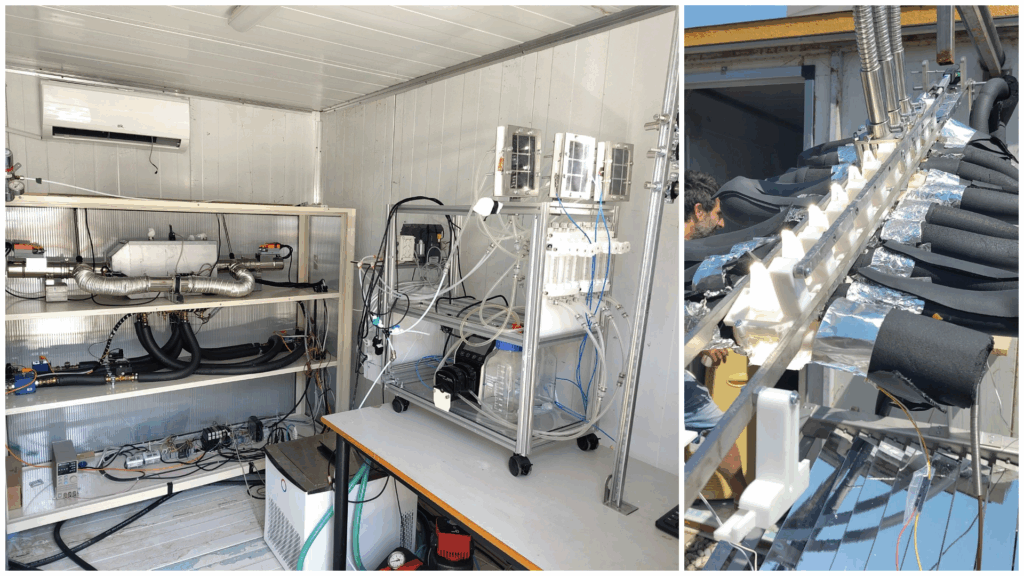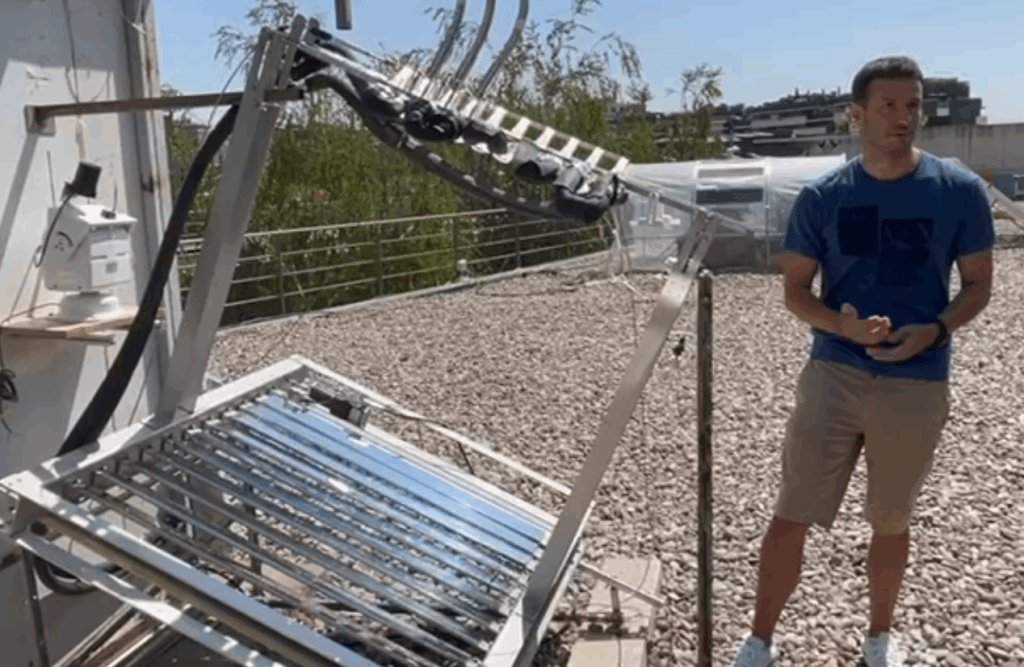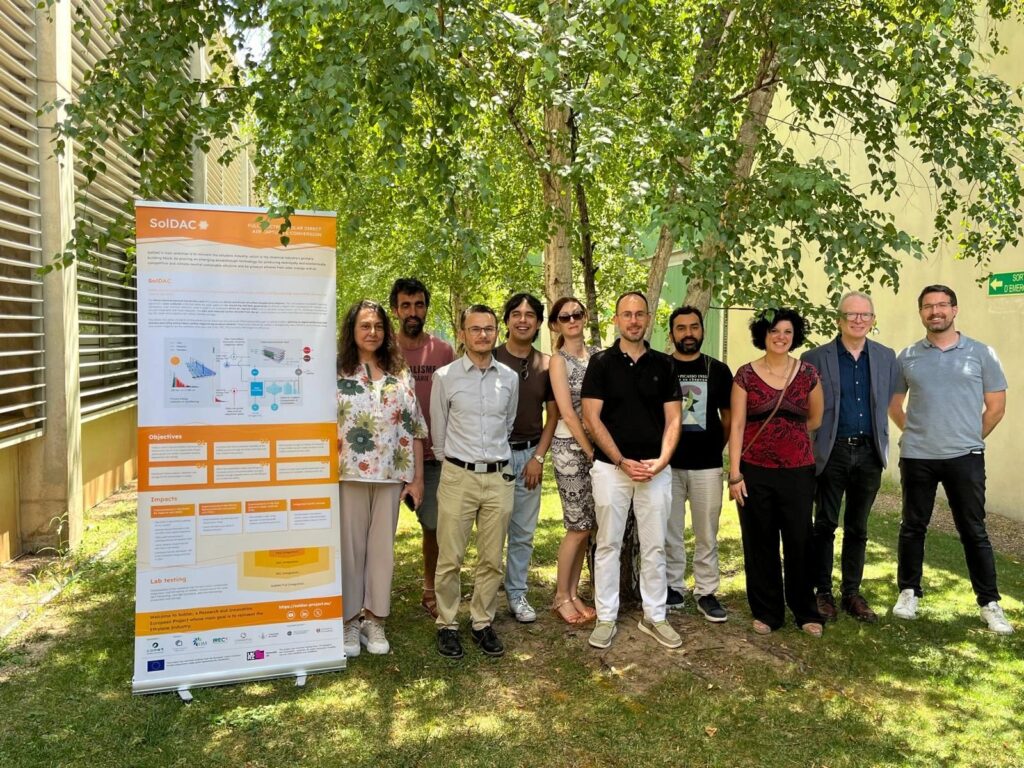Last week, the SolDAC consortium visited its prototype in Lleida, Spain.During the visit, we were able to discuss the configuration of the three units that constitute the prototype: the photoelectrochemical conversion system (PEC), the full solar spectrum (FSS) unit, and the water collector.

This on-site meeting was very enlightening and a significant technical milestone for all partners, as it allowed us to see the prototype in its usual location at the University of Lleida (on the rooftop of the CREA building at the University of Lleida, UdL) and check its operation. It was Dr. Daniel Chemisana (UdL) who explained how the FSS unit collects and divides solar energy, providing heat and electricity. Dr. Andrés Alberto García Blanco (IREC) explained how the PEC unit uses solar energy to convert the captured CO₂ into valuable chemicals, such as ethylene. We were able to see from Dr. Valeria Palomba (CNR-ITAE) that the water collector provides the degree of humidity needed for the process.

This visit to Lleida was not only a demonstration but a critical test of how these units work together and their readiness for real-world application.
The visit began with a detailed explanation by the University of Lleida about the systems installed in their facilities, followed by a physical tour of the different subsystems.

The prototype is located on the rooftop of the university building to capture better the solar radiation required for the FSS system. This system is located outside, in the open air, whereas the rest of the systems that comprise the prototype are housed inside a cabin.

The Lleida meeting was crucial for coordinating the team. After months of hard work, bringing all the partners together strengthened the team. The pack leaders reviewed the job done, the pending tasks and the results.
Although all SolDAC sites contribute essential elements, Lleida plays a special role.